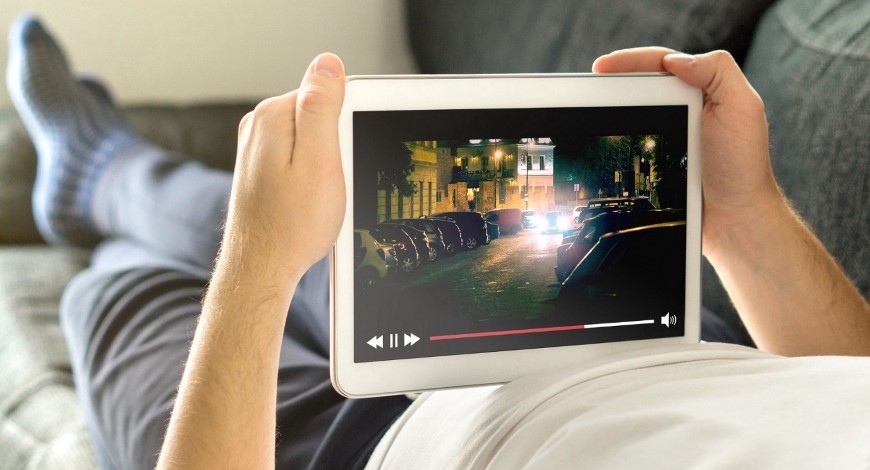Trends
Online video viewing growth flattens in US, Europe

Globally, streaming video saw viewing grow 10% in the last quarter, but that growth occurred largely outside the two most built-out regions, North America and Europe, according to the latest State of Streaming quarterly report from service provider Conviva. The good news: viewers are getting a higher-quality experience.
“While more-saturated markets like North America and Europe are starting to stabilize, there are still plenty of growth opportunities throughout the world,” the report says. “And any growth after such massive expansion over the past two years is good news for both streaming providers and streaming viewers.”
The report also tracks the growing interest among brands in fast-growing social-media site TikTok, which topped 1 billion users last year. For sports franchises across all leagues measured in the report, TikTok is becoming a valuable teammate. Both teams in this year’s NFL Super Bowl – the Los Angeles Rams and Cincinnati Bengals – saw their TikTok followings add more than 100,000 followers in 24 hours.
But the big screen, by living room standards at least, continues to dominate. Conviva’s report says 77% of all streamed minutes viewed globally were larger screens, on either Connected or Smart TVs, where viewership jumped more than a third.
“As the world rights itself after a pandemic that threw so many media consumption patterns upside down, the streaming and social worlds will begin to settle into a new normal, one where streaming is a part of everyday life in a way it wasn’t before and social media increasingly moves toward short- and long-form videos made by both users and savvy brands,” Conviva’s report concludes.
Viewing time grew most in Asia (other than China), up 172% compared to the same quarter the previous year. Africa and Oceania both saw viewing rise 50% or more, and South America was up 34%. Even the topped-out markets of Europe (up 9%) and North America (up 5%) still saw some growth in viewing time.
Viewing experiences generally improved in most ways except start failures, which “were up across the board.” Wait times for video starts also stretched out, up 30% globally, and 56% in Asia, though the delays are measured in a handful of seconds.
Other typical streaming problems, such as low bitrates or excessive buffering actually improved. Asia saw a near-90% improvement in picture quality, for instance.
“As big screens, especially smart TVs, continue to grow in share, it follows that there might be longer wait times, but much better quality overall,” the report said.
Streaming advertising is also picking up, as previously suggested by the Interactive Advertising Bureau’s wrap-up of 2021 digital ad revenues, which said the market last year generated $39.5 billion, up a whopping 51%.
According to Conviva, ad impressions were up 18%, driven by big sports events in the quarter such as the Super Bowl, March Madness and the Winter Olympics.
“All and all, it was a much better quarter for streaming advertising, both in terms of impressions and quality,” according to the report.
Big screens’ domination of the streaming video experience is “pretty steady,” the report said. One subtle shift noted in passing: viewing on connected TVs using an external dongle or Internet-capable device declined 2%, while viewing on Smart TVs with built-in capabilities rose a whopping 37%.
Even mobile-obsessed Asia saw a big jump in big screen viewing, up from 27% of time spent to 43% year over year. The big losers in view share were desktop PCs and gaming consoled, which were down 15%.
Among platforms (connected both internally and externally to the screen), Roku continued to receive the most viewing time, 31%, roughly double Amazon’s AMZN -7.2% Fire devices at 16%. Roku’s domination was mostly due to its sturdy dominance of the United States and North America market. In other parts of the world, its market share doesn’t rise above 8% (in Oceania).
Smart TVs with Alphabet-owned Android TV interfaces grew the most on the year, up almost 3 percentage points to 7.24% of viewing time, a big jump on what’s still a relatively small share of a very crowded market for interfaces.
Apple TV saw its share drop a fraction of a percentage point. Samsung, LG, and Vizio OEM Smart TVs all saw their shares rise.
But quality on at least some big screens remains a challenge, according to Conviva’s findings. Apple TV had a huge improvement in start failures, down “a massive 52%,” while Android TV had the biggest rise in failures, up 26% to 1.6% of all its shows.
It’s not just Conviva finding quality problems in the streaming experience either.
Accenture ACN -5.8% issued a report a couple of months ago, “Streaming’s Next Act,” that laid out several areas where streaming services need to step up their user experiences: interfaces that are hard to navigate, crummy recommendation engines that have no idea what you watched somewhere else, even bundles that don’t work like bundles should in terms of single sign-on and billing, among other issues.
For all the negative Wall Street reaction around Netflix’s NFLX -7% mediocre quarter and forward guidance, the streaming industry is still generating plenty of business. Most media companies with major streaming divisions not named Netflix reported millions more adds in the quarter.
The trade organization Digital Entertainment Group estimated in its quarterly report Monday subscription streaming was up 17% year over year, “as direct- to-consumer services including AMC Plus, Disney Plus, HBO Max, Paramount Plus, Peacock and others continued to add subscribers at a healthy rate.”
The report is based on sensor technology in streaming programs on devices with more than 500 million viewers worldwide, watching more than 200 billion streams, the company said. The year-over-year data is then normalized on Conviva’s customer base.
The report no longer includes streaming data from the vast China market “due to global geopolitical conditions,” it said. Forbes





You must be logged in to post a comment Login